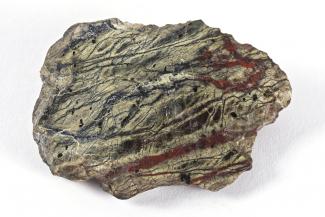
Geological Setting
There are three outcropping geological periods in Hampshire; the Quaternary, the Paleogene and the Cretaceous.
The sands, clays and gravels of the Quaternary period are present in most river valleys and on many terraces, particularly along the southern coast of the county.
The sands and clays of the Paleogene period underlie the southern coastal plain where they occasionally outcrop. They also occur in parts of north Hampshire but here they are mostly buried below superficial deposits.
The Late Cretaceous chalk forms the higher downland of Hampshire and the Isle of Wight. The sands and clays of the Early Cretaceous period underlie eastern Hampshire and the southern side of the Isle of Wight outcropping in several places.
Quaternary Period
The Quaternary period began with the Pleistocene stage about 1.64 million years ago. This stage is represented by superficial deposits of sand, mud/clay and particularly terraced gravels, which were the by-product of water erosion and changes in sea level during the various interglacial episodes at this time.
The Holocene (or post-glacial) stage began 0.01 million years ago and still continues.
Quaternary deposits have been recorded throughout the county, along the coast and on the seabed, both as continuous features and in isolated pockets.
Paleogene Period
In Hampshire and the Isle of Wight this geological period began with the Thanetian stage about 60.5 million years ago and ended with the Priabonian stage about 35.4 million years ago.
Other stages in this geological period include the Ypresian, Lutetian and Bartonian. Each of the five stages has been further divided into five groups and twelve formations. Each Formation contains distinctive sediments and associated fauna, which reflect the complex transgressive marine and regressive terrestrial phases present throughout the Paleogene Period.
The Paleogene Period of Hampshire is approximately 450 metres thick.
Cretaceous Period
In Hampshire the Cretaceous began about 145.6.million years ago with the Berriasian stage and ended with the Maastrichtian stage about 65.0 million years ago.
The terrestrial deposits of the Barremian stage represent the early part of the Cretaceous period of Hampshire and the Isle of Wight. The marine transgression which followed is represented by the remaining seven stages, of which the Campanian is the most recent stage found in Hampshire. These Cretaceous stages have been divided into ten formations of marl, clay, sand, sandstone and limestone. Each formation contains a diverse fossil fauna dominated by vertebrates in the early stages giving way to mollusca in the later stages.
The Cretaceous lasted about 80 million years and in Hampshire is approximately 1,000 metres thick. The majority of the down-land in Hampshire and the Isle of Wight over 100 metres high overlies the chalk of the Late Cretaceous Period.


